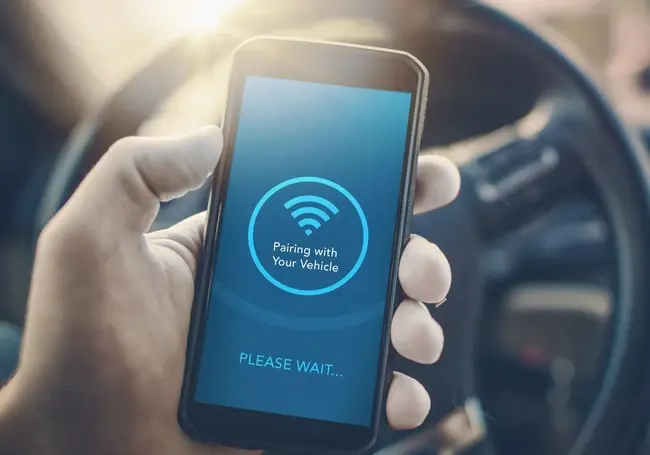Think your phone is safe just because you haven't clicked a dodgy link? Think again. Lurking in the airwaves, a sneaky cyberattack could be snatching your contacts, messages, and even more.
The attack method known as bluesnarfing exploits your Bluetooth device connections to help malicious actors gain unauthorized access to your data.
But what exactly is a bluesnarfing attack, how do they work and, most importantly how can you prevent being a targeted by one? We’ve got you covered with this comprehensive guide.

What is BlueSnarfing?
BlueSnarfing is a type of cyber attack that exploits Bluetooth connections. It allows cybercriminals to bypass security measures and leverage Bluetooth to access data on wireless devices.
This allows an attacker within Bluetooth range to gain access to data stored on the targeted device without the owner's knowledge or consent.
Through bluesnarfing, malicious actors can secure a range of sensitive personal data from. This includes the theft of contact lists, compromising phone numbers and names, and the unauthorized reading of private communications like emails and SMS messages. Furthermore, attackers can gain access to personal schedules and appointments stored in calendar entries, as well as private media files such as photos and videos. Critically, the device's IMEI number, a unique identifier, can also be illicitly acquired, potentially enabling further malicious activities like the interception of calls and messages.
While modern operating systems and Bluetooth standards have significantly reduced the prevalence of this type of attack, it remains a potential threat, particularly for older or unpatched devices across workplaces that have not modernised.
How Does BlueSnarfing Work?
BlueSnarfing works by exploiting vulnerabilities in a specific Bluetooth protocol, the Object Exchange (OBEX) protocol.
Attackers use specialized software tools, sometimes referred to as "bluesnarfing tools" or "Bluetooth sniffers," to scan for nearby Bluetooth devices that are discoverable and potentially vulnerable. Older devices or those with unpatched software are more likely to have exploitable weaknesses.
Typically the attacker will need to be in physical range of the target device, which is around 10 meters. However this range can also be amplified in some cased with directional antennas.
The Object Exchange (OBEX) protocol is a communication protocol that facilitates the transfer of binary data (objects) between devices. In Bluetooth it is most often used for exchanging various types of data between Bluetooth-enabled devices, such as contact information, calendar entries, and files.
Bluesnarfing exploits vulnerabilities in the way some Bluetooth devices handle OBEX connections, particularly the Object Push Profile (OPP). In vulnerable devices, an attacker could potentially establish an unauthorized OBEX connection without requiring pairing or authentication. Once connected, they could use OBEX commands to retrieve data stored on the device, such as contacts, calendar entries, and other personal data, without the owner's knowledge or consent.
How To Prevent Bluesnarfing?
Though Bluesnarfing poses a significant threat, there are steps that you can take to prevent yourself being impacted.
The most effective measure may seem obvious but is easily ignored- simply turn off Bluetooth when not in active use.
Ensure your device's discoverability is disabled, preventing it from being visible to unsolicited connections. Be vigilant about pairing requests, only accepting connections from trusted devices and avoiding initial pairings in public spaces.
Where possible employe strong pairing pins and passcodes.
It is also crucial to keep software and Bluetooth drivers up to date with necessary security patches.
Practice good digital hygiene by reviewing your list of paired Bluetooth devices and disconnect any devices that you don’t recognise or no longer use.







Comments ( 0 )